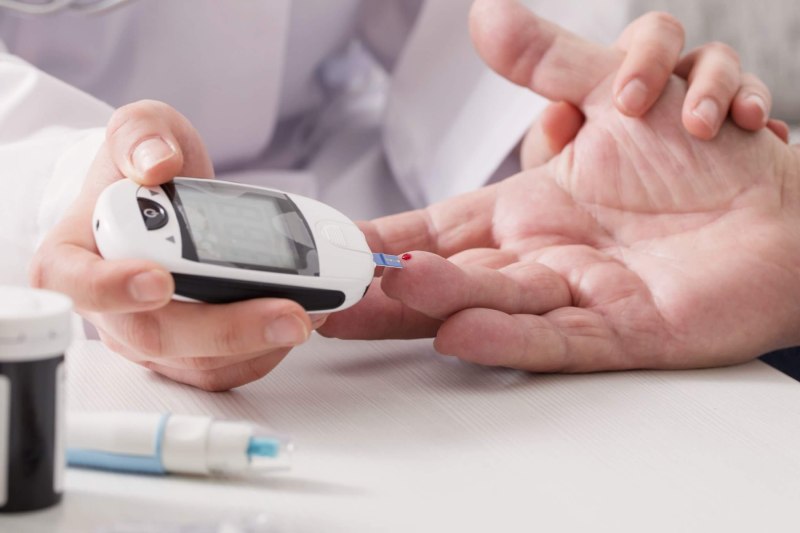Diabetes mellitus, commonly referred to as diabetes, is a chronic condition characterized by persistently high blood sugar levels. These elevated levels arise due to either a lack of insulin production (Type 1 diabetes) or the body’s inability to utilize insulin effectively (Type 2 diabetes). Insulin, a hormone produced by the pancreas, acts as a key, unlocking cells and allowing them to absorb glucose (blood sugar) from the bloodstream for energy.
Traditionally, people with diabetes relied on finger pricking and blood glucose meters to monitor their blood sugar levels. While valuable, these methods offer snapshots at specific times. However, the advent of Artificial Intelligence (AI) is transforming glucose monitoring, ushering in a new era of personalized and intelligent diabetes management.
This comprehensive guide delves into the exciting world of AI-powered glucose monitoring systems. We’ll explore how AI is revolutionizing this field, the various applications of AI in glucose monitoring, and the potential future advancements that hold immense promise for people living with diabetes.
Understanding Blood Sugar Control and Its Challenges
Maintaining healthy blood sugar levels is crucial for overall well-being. Chronically high blood sugar can lead to a cascade of health complications, including heart disease, stroke, kidney disease, and vision problems.
Effective diabetes management involves a multi-pronged approach, including:
- Diet: Consuming a balanced diet rich in whole grains, fruits, vegetables, and lean protein while limiting processed foods, sugary drinks, and unhealthy fats.
- Exercise: Engaging in regular physical activity helps improve insulin sensitivity and blood sugar control.
- Medication: Depending on the type and severity of diabetes, medication like insulin or oral medications may be necessary.
- Blood Sugar Monitoring: Regularly monitoring blood sugar levels allows for adjustments to diet, exercise, or medication as needed.
However, traditional blood sugar monitoring methods have limitations:
- Invasive: Finger pricking can be inconvenient and sometimes painful.
- Limited Data: Provides a snapshot at a specific time, not a continuous picture.
- Time-Consuming: Frequent finger pricking can be disruptive to daily routines.
- Interpretational Challenges: Understanding blood sugar trends and their impact on overall health can be challenging.
AI: Transforming Glucose Monitoring
AI, a branch of computer science concerned with creating intelligent machines, is making significant inroads in the field of diabetes management. AI algorithms can analyze vast amounts of data, identify patterns, and make predictions, offering valuable insights for people with diabetes and their healthcare providers.
Here’s how AI is revolutionizing glucose monitoring systems:
- Continuous Glucose Monitoring (CGM) with AI Integration: CGM systems use sensors inserted under the skin to continuously monitor blood sugar levels in the interstitial fluid (fluid between cells). AI algorithms can analyze CGM data in real-time, providing insights into trends, potential fluctuations, and personalized recommendations.
- Predictive Analytics: AI can analyze historical data, including blood sugar trends, dietary intake, activity levels, and medication usage, to predict future blood sugar levels. This allows for proactive adjustments to insulin dosages, meal plans, or exercise routines to prevent hyperglycemia (high blood sugar) or hypoglycemia (low blood sugar).
- Automated Insulin Delivery: AI-powered closed-loop systems integrate CGM data with insulin pumps to automatically adjust insulin delivery based on real-time and predicted blood sugar levels. This mimics the function of a healthy pancreas, offering a more precise and personalized approach to blood sugar control.
- Personalized Insights and Actionable Recommendations: AI can analyze CGM data and other health data (sleep patterns, stress levels) to generate personalized reports highlighting areas for improvement and provide actionable recommendations to optimize diabetes management strategies.
Benefits of AI-powered Glucose Monitoring Systems
The integration of AI into glucose monitoring systems offers a multitude of benefits for people with diabetes, including:
- Improved Glycemic Control: AI-powered insights and predictions can help maintain blood sugar levels within a healthy range, reducing the risk of complications.
- Reduced Hypoglycemia Risk: Predictive alerts can warn of impending hypoglycemia, allowing for timely intervention to prevent its occurrence.
- Enhanced Treatment Decisions: Real-time and historical data analysis empowers individuals and healthcare providers to make informed decisions about treatment adjustments and medication dosages.
- Improved Quality of Life: Reduced finger pricking, automated insulin delivery, and personalized insights can significantly improve quality of life and reduce the burden of diabetes management.
- Greater Patient Empowerment: AI tools can provide a deeper understanding of how food, exercise, and lifestyle choices impact blood sugar, allowing individuals to take a more active role in their diabetes management.
Examples of AI-powered Glucose Monitoring Systems
Several AI-powered glucose monitoring systems are emerging in the market, each with unique features:
- Dexcom G6 with Clarity App: This system integrates CGM with an AI-powered app that provides personalized insights on blood sugar trends, activity patterns, and sleep data. It also offers alerts for potential highs and lows.
- Medtronic Guardian Connect with SugarIQ: This system combines CGM with an app featuring AI-powered reports that analyze trends and offer recommendations for better blood sugar control.
- Abbott Libre Sense with Freestyle Libre 3: This system utilizes CGM data and AI to generate personalized insights and suggest adjustments to diet, exercise, or medication based on individual needs.
Challenges and Considerations for AI-powered Glucose Monitoring
While AI holds immense promise for the future of glucose monitoring, there are still challenges to address:
- Data Security and Privacy: Ensuring the security and privacy of sensitive health data collected by AI-powered systems is paramount.
- Algorithmic Bias: AI algorithms are trained on vast datasets. If the data is biased, the resulting insights could be inaccurate and potentially harmful.
- Affordability and Accessibility: Ensuring that AI-powered glucose monitoring systems are affordable and accessible to everyone with diabetes is crucial.
- User Acceptance and Trust: Building trust and user acceptance of AI-powered recommendations and automated insulin delivery systems requires ongoing education and transparency.
The Future of AI in Glucose Monitoring
The future of AI in glucose monitoring is brimming with exciting possibilities:
- Non-invasive Monitoring: Research is ongoing for non-invasive methods like smartwatches or wearables that use AI to monitor blood sugar levels through sweat, tears, or breath analysis.
- Integration with Wearable Devices: Seamless integration of CGM data with fitness trackers and smartwatches can provide a holistic view of health and activity levels.
- Advanced Insulin Delivery Systems: AI-powered closed-loop systems will become even more sophisticated, potentially mimicking the intricate functions of a healthy pancreas with precise and personalized insulin delivery.
- AI-powered Coaching and Support: AI-powered virtual assistants can offer personalized coaching, support, and reminders to help individuals stay on track with their diabetes management goals.
Conclusion
AI is revolutionizing the landscape of glucose monitoring, offering a future filled with personalized insights, improved blood sugar control, and a significantly enhanced quality of life for people with diabetes. As AI technology continues to evolve, we can expect even more groundbreaking advancements that empower individuals to take charge of their diabetes management and live healthier, fulfilling lives.

 Diabetology2 weeks ago
Diabetology2 weeks ago
 Diabetology1 week ago
Diabetology1 week ago
 Diabetology5 days ago
Diabetology5 days ago
 Diabetology6 days ago
Diabetology6 days ago
 Diabetology6 days ago
Diabetology6 days ago
 Diabetology3 days ago
Diabetology3 days ago
 Diabetology3 days ago
Diabetology3 days ago
 Diabetology1 day ago
Diabetology1 day ago










